Potluck #2: The Deck
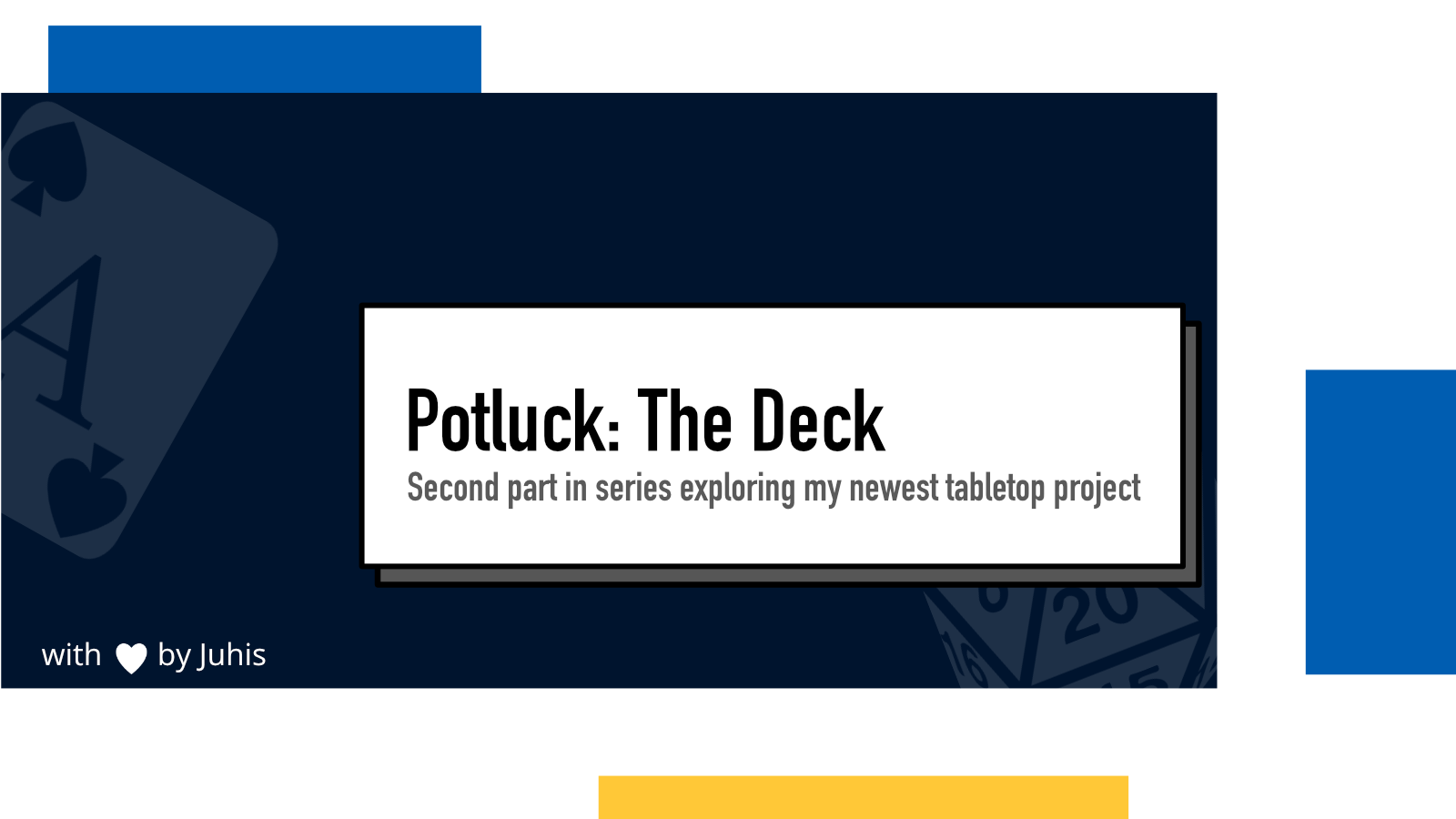
This is the second part in a three part blog series exploring my most recent tabletop design project, Potluck. The first part, Research and Design was published last month and the final part My workflow, will publish on the first Wednesday of April.
This part explores the deck and its form and function. In the last post I'll go into my workflow and what tools I used to build it.
The Deck

The Numbers
The core of this deck is the main numbering. The deck consists of 106 cards, numbered from 0 to 104 with an added 00 (double zero).
The main number is big and bold in the center to make it easy to read and uses a font with a shadow to make numbers easier to recognize and to make 6s and 9s easily distinguishable from each other (which had proven to be a problem in my previous deck):
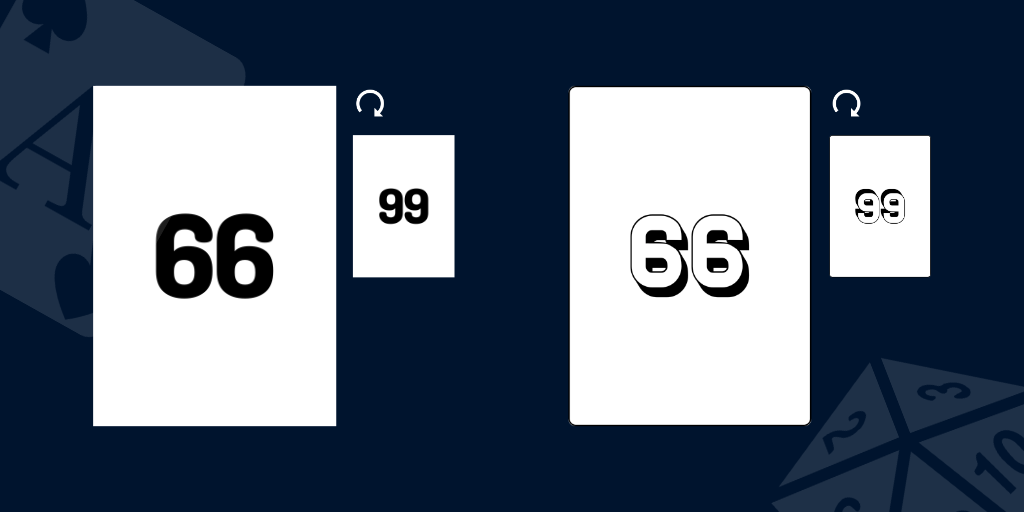
On the left, you can see card 66 from my previous deck and next to it the same card rotated. On the right, you can see 66 with the new font. We ran into this problem multiple times when playing 6 Nimmt! with the old deck so I decided to choose a font that solved the issue.
Before I decided on the font change, I also experimented with having a graphical indicator:
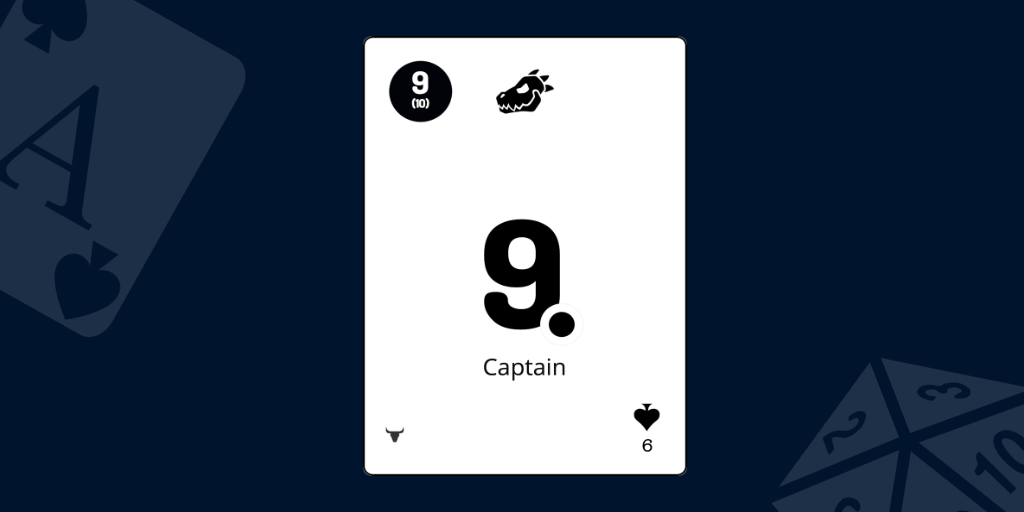
I really liked that visual (thanks Marlo for the inspiration and idea for that) but decided to change the font in the end.
These numbers can be used for a lot of different games: 6 Nimmt, No thanks, The Game, Fugitive and many others, for example these 56 games.
These numbers are also replicated on the top left, so if you fan your cards out with the top left visible, you can see the number there too (as you can see in the image of 9 above.

The numbers in the top left corner have a few variants.
The colors run through black (0-10), red (11-20), blue (21-30), brown (31-40), green (41-50), yellow (51-60), purple (61-70), grey (71-80) and then again black (81-104). From 0 to 70, these represent the colors in Texas Showdown (also known as Seas of Strife).
Some numbers also have a smaller number in parenthesis next to them. These show the highest value available in that color when playing Texas Showdown. They serve a small but important part in that game and is only needed on a closer inspection so the text can be smaller too.
Playing cards in 8 suits
On the bottom left corner, rotated 180 degrees, are traditional French-suited playing cards – but with 8 instead of 4 suits. I added two blue (coins and stars) and two green (swords and triforce) suits.
These can play thousands of card games and while I very rarely play those games, I wanted to add them to the set for the sake of having them there if I need them.
In addition to traditional card games, these can also be used in a many "modern" games that require certain groupings. With 8 suits and 14 values in each, the deck can play games like Parade and Arboretum (for 2-3 players).
Small quality of gaming additions
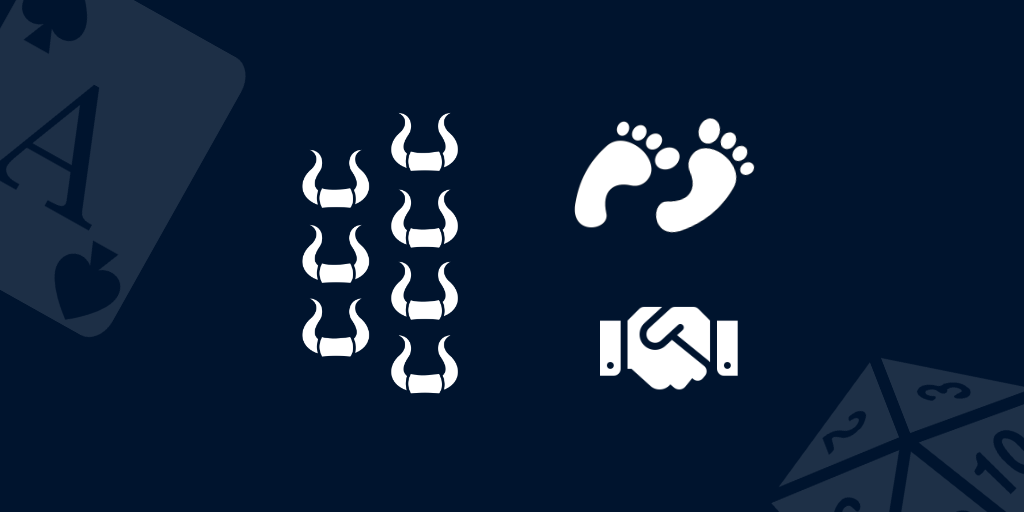
What makes this deck less universal (I explored this a bit in the previous blog post) is that I made decisions based on the games I like. And to make those games easier to play, I added very specific things for them.
Texas Showdown's max value I mentioned above is one of those. The bottom left corner has bullheads for 6 Nimmt! scoring. Above the numbers 2 to 41 are footprints that help you remember how many sprints you get with them in the Fugitive. Some of the top right corner circles have handshake icons to make them more thematically suited for Lost Cities.
Roles
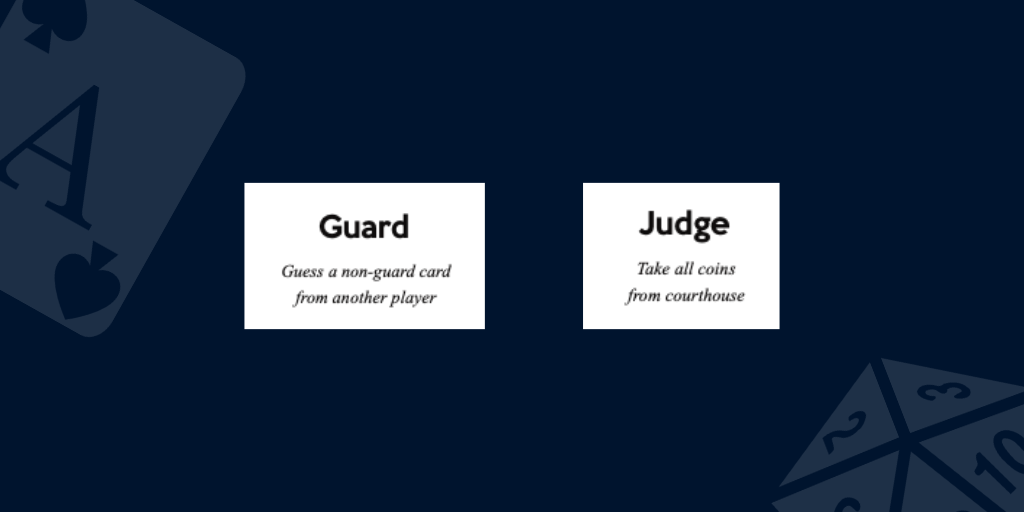
Some games that I really enjoy are social deduction games with hidden identities. They usually don't rely on much game mechanics but rather social skills, bluffing, manipulation and deduction. They are great "party" games because they are not complex with mechanics and don't rely on a lot of components or long setups.
Games like Love Letter and Coup are played with cards that have roles and these roles change constantly throughout the game. Similar but in a very fun way distinct is Mascarade where you try to deduce what role you might have at any given time as the cards shuffle around the board. Werewolf (often also known as Mafia) distributes players special roles and then plays completely through discussion and voting with no other mechanics through coins, tokens nor cards.
The same text section of the cards is also used for money cards to be used to play the wonderful For Sale.
Skulls, roses and moving animals
On the top center, I made a bold experiment and added rather large elements. This is the one thing that I'm most concerned of prior to more play testing.
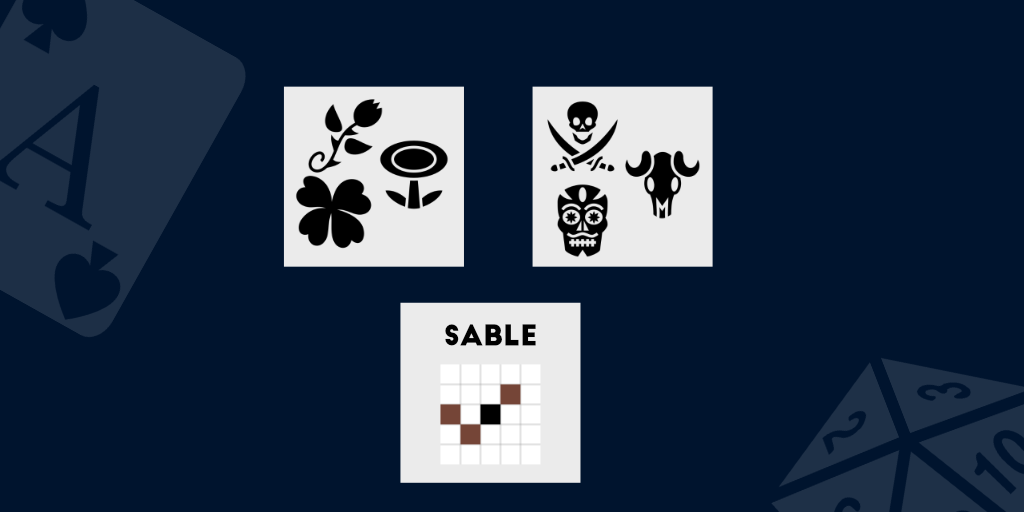
Skull & Roses is a wonderful bluffing party game that I wanted to include in the set as it's a great short game that requires very little rule explanation and can be played in a pub or while waiting for a train for 5 or 30 minutes.
I added 6 different sets of skulls and roses to accomodate 6-player games but also to give the players the option to choose the ones that best match their personality.
While I had reserved space for those in the top, I had a lot of cards with nothing there so I decided to add Onitama moves. Add a 5x5 grid and a few meeples and you can play the great "chess-lite" style game about moving your pieces according to different animal patterns.
It does require carrying extra pieces and I haven't quite solved that puzzle yet. I'd love to have a custom designed playmat that would support multiple games but that's a way harder design puzzle than semi-universal cards. Alternatively, e-ink neoprene playmats would be amazing.
I'm bit concerned because when I'm looking at the cards in isolation (ie. in the design mode), they can feel quite crammed. From my previous set, I learned that it's actually quite easy to ignore the other bits when playing a specific game so I pushed the cards a bit more this time to truly test this hypothesis.
After all, every step on the way is experiment and progress. I've been telling that to myself when I've been doubting certain decisions. I'm creating a one-off project for myself but still somehow I hear the inner critic taking part in this way too much.
My other table top projects
If you're still here, it's likely the topic interests you. You can continue learning about my other projects:
- Minimal Travel Table Top Game Collection 1. This is where it all started.
- Minimal Travel Table Top Game Collection 2: Social Distancing Edition was my answer to lockdown and having to play alone.
- Minimal Travel Table Top Game Collection 3: Project 108 was my first attempt to create this kind of deck that Potluck is a direct spiritual successor of.
- My pockets are full of games is an exploration of all sorts of projects that I've worked on.
- Taajuus is an open-source digital version of a great board game Wavelength that I built for a team activity at work during the pandemic lockdown.
April 5th I'll wrap up this project with the last blog post in series where I talk about the workflow and tools that I've used to build Potluck.
Let me know in Mastodon what are your favorite board games!
If something above resonated with you, let's start a discussion about it! Email me at juhamattisantala at gmail dot com and share your thoughts. In 2025, I want to have more deeper discussions with people from around the world and I'd love if you'd be part of that.